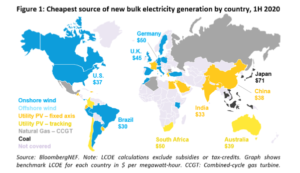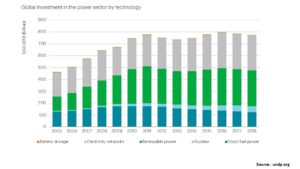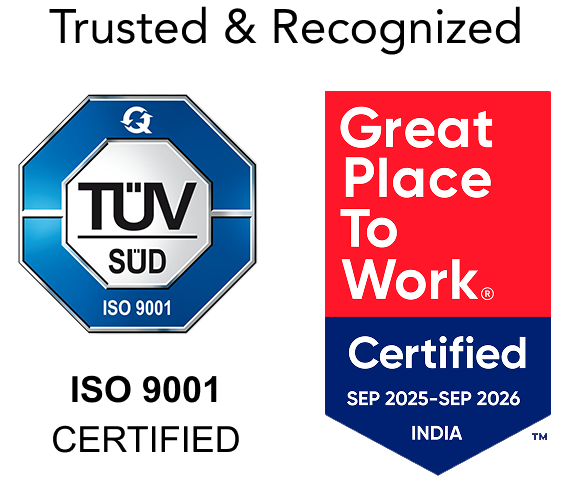By Joseph Saviour, Senior Analyst, Distributed Energy
The renewable energy industry has entered a new phase of growth, driven largely by increasing customer demand, cost competitiveness, innovation, and collaboration. Global investments in renewable energy was $272.9 billion in 2018, the 5th successive year in which it has exceeded $250 billion. With many forms of renewable energy becoming economically viable, consumers have started to embrace these technologies amid growing concerns over carbon dioxide emissions and environmental degradation. Investors have also started to reconsider the market because of rapid innovation and cost declines in renewable energy. Additionally, clean energy portfolios can often be procured at significant net cost savings, with lower risk and zero carbon and air emissions.
In this article, we will take a look at how investors can capitalize on these trends by allocating private capital into renewable energy investment portfolios and consequently help promote market ready, investor-grade green projects get off the ground.
Renewable Energy in Your Portfolio
An investment portfolio is a basket of assets that can hold stocks, bonds, cash and more. Investors aim for a return by mixing these securities in a way that reflects their risk tolerance and financial goals. The portfolio is constructed based on the expected return, the risk that the investor is willing to accept, and the level of liquidity.
A balanced portfolio investment strategy is a way of combining investments in a portfolio that aims to balance risk and return. Finding the right balance, largely depends on an investor’s financial resources and risk tolerance. Diversification is a key component to balancing and building a successful investment portfolio. If economic or political events harm a single company or industry, good diversification will keep the rest of the portfolio safe.

Over the last decade, renewable energy has become an excellent addition to investment portfolios and is a smart allocation strategy for building a geographically diverse portfolio. Investments in renewable energy projects continue to tick off all the right boxes when screening for long-term, investor-grade, high-quality, contracted assets. This is evident whereby major investment firms such as KKR and Blackstone are expanding its renewable energy portfolios through the purchase of several utility-scale projects in North America, Asia and Africa. There are a range of reasons for this, including the growth of ethical investing (ESG), speed of technological growth, tax incentives, positive impact on trade and various national green investment policies (Renewable Portfolio Standards). Solar energy, in particular, has seen the highest capacity investments in the last decade, comprising over 50% of total renewable energy investments. Since the second half of 2008, the cost comparison has changed out of all recognition – the benchmark global levelized cost of electricity for solar photovoltaics has fallen by 81%. In many countries, the cheapest source of new generation capacity as of 2019 is either solar or wind.
Given the evident growth potential of the renewable energy sector over the last decade, many investment firms have begun to offer services aimed at managing investor capital with a specific investment mandate to deploy capital into renewable energy projects across various geographical regions.
Benefits for Investors
1) Diversification – benefit from investing across multiple renewable energy projects in various geographies.
2) Reduced minimums – Websites such as ours give an investor the opportunity to invest in multiple assets at a substantially lower minimum compared to investing in individual assets. Based on the experience of the portfolio manager, these investments can be balanced to give an attractive IRR.
3) Further leverage options – once the capital is invested, through banking relationships, a mix of debt to equity financing can be arranged at attractive interest rates, vastly improving IRR.
At the same time, it is important to be mindful of several drawbacks. Medium to large investment firms will be focused on deploying capital in large-scale utilities, implying the initial capital contributions required to manage an investor’s portfolio may be significantly higher. This might dissuade some investors that are looking for lower “ticket size” investments. Smaller-scale investment firms or aggregators such as Distributed Energy, on the other hand, are likelier to build a diversified portfolio for a smaller initial capital investment. Furthermore, the investment mandate is likely to have more flexibility and can be tailored to the personal interests of the investor.
For return expectations, most renewable assets are designed to offer 10% + dollar based IRR. Distributed Energy focuses on investments with 16%+ unleveraged IRR with a portfolio focus in commercial and industrial centric projects.
Moving forward, investors with investments in renewable energy portfolios have good reason to continue investing and moving forward in this direction. As for the observing investors, yet to take advantage of this opportunity, by the end of the decade of 2010-2019, we have seen over $2.6 trillion invested globally in renewable energy capacity, more than treble the amount invested in the previous decade.

Investing in renewable energy is investing in a sustainable and profitable future, as the last decade of incredible growth in renewables has shown. Expanding your portfolio investment strategy to accommodate renewable energy projects will not only provide attractive returns but will also be your contribution towards addressing our climate crisis. It is the right time to allocate a percentage of your portfolio to renewables. Contact us to find out more information.




